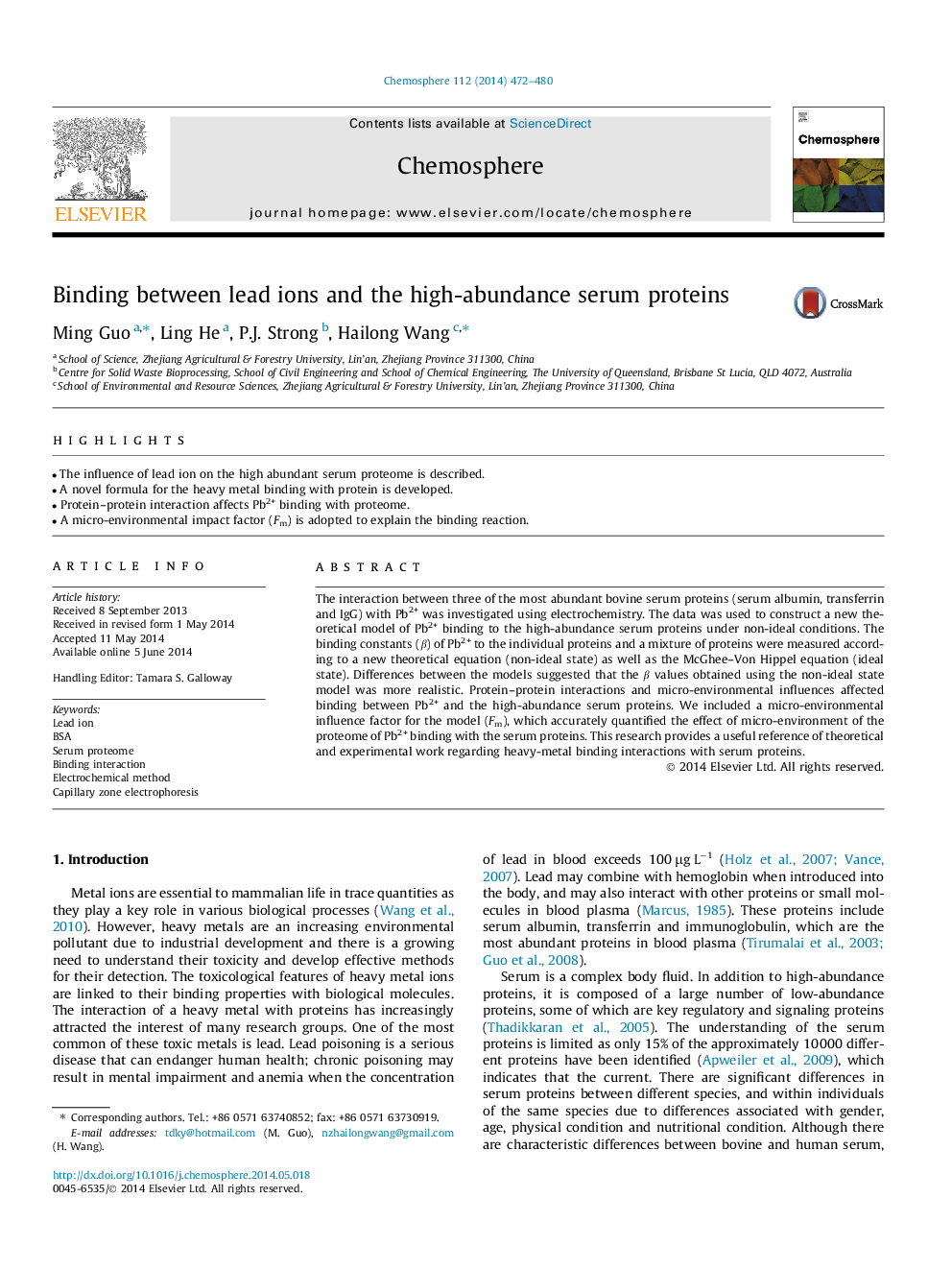| Article ID | Journal | Published Year | Pages | File Type |
|---|---|---|---|---|
| 6308884 | Chemosphere | 2014 | 9 Pages |
â¢The influence of lead ion on the high abundant serum proteome is described.â¢A novel formula for the heavy metal binding with protein is developed.â¢Protein-protein interaction affects Pb2+ binding with proteome.â¢A micro-environmental impact factor (Fm) is adopted to explain the binding reaction.
The interaction between three of the most abundant bovine serum proteins (serum albumin, transferrin and IgG) with Pb2+ was investigated using electrochemistry. The data was used to construct a new theoretical model of Pb2+ binding to the high-abundance serum proteins under non-ideal conditions. The binding constants (β) of Pb2+ to the individual proteins and a mixture of proteins were measured according to a new theoretical equation (non-ideal state) as well as the McGhee-Von Hippel equation (ideal state). Differences between the models suggested that the β values obtained using the non-ideal state model was more realistic. Protein-protein interactions and micro-environmental influences affected binding between Pb2+ and the high-abundance serum proteins. We included a micro-environmental influence factor for the model (Fm), which accurately quantified the effect of micro-environment of the proteome of Pb2+ binding with the serum proteins. This research provides a useful reference of theoretical and experimental work regarding heavy-metal binding interactions with serum proteins.
